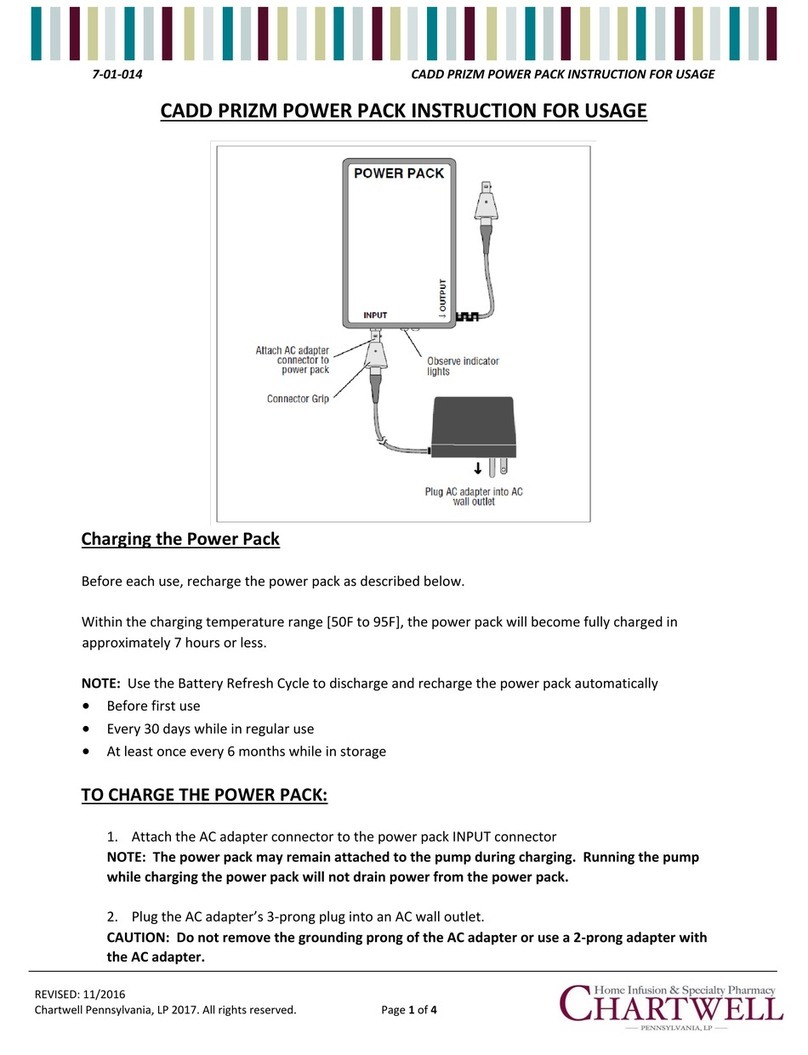
iv
Clinicians must regularly compare the volume remaining in the sy-
ringe to the pump’s displayed values such as RES VOL and GIVEN in
order to determine whether under-delivery of medication is occurring
and if necessary, take appropriate action.
•System delivery inaccuracies may occur as a result of back pressure or
uid resistance, which depends upon medication viscosity, catheter
size, and extension set tubing (for example, microbore tubing).
•Do not administer medications to the epidural space or subarachnoid
space unless the medication is indicated for administration to those
spaces.
•To prevent the infusion of medications that are not indicated for
epidural space or subarachnoid space infusion, do not use administra-
tion sets that incorporate injection sites.
•If a Medication Cassette Reservoir, CADD™Extension Set or CADD™
Administration Set is used for medication delivery into the epidural
or subarachnoid space, clearly dierentiate them from those used for
other routes of infusion, for example, by color coding, or other means
of identication.
•When the Air Detector is turned o, the pump will not detect air in
the uid path. Periodically inspect the uid path and remove any air
to prevent air embolism.
•Follow the Instructions for Use provided with the Medication Cas-
sette Reservoir and CADD™Extension Set, or CADD™Administra-
tion Set, paying particular attention to all warnings and cautions
associated with their use.
•When the Upstream Occlusion Sensor is turned o, the pump will not
detect occlusions upstream (between pump and uid container). Periodi-
cally inspect the uid container for decreasing volume, inspect the uid
path for kinks, a closed clamp, or other upstream occlusions. Upstream
occlusions could result in under- or non-delivery of medications.
•Do not disclose to the patient the pump’s security codes or any other
information that would allow the patient complete access to all pro-
gramming and operating functions.




























